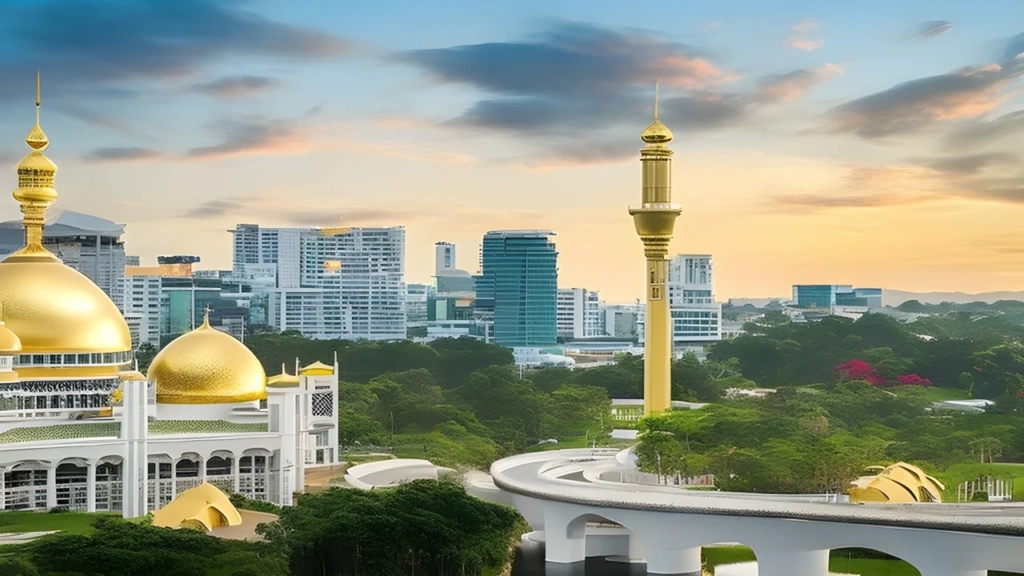In the dynamic landscape of Brunei’s economy, the first quarter of 2023 has emerged as a beacon of economic resilience and growth. We delve into the intricate details of this transformation, examining the factors that have driven Brunei’s non-oil and gas sector to new heights and exploring the implications for its economic trajectory.
Unveiling the Remarkable Growth
In a testament to its economic prowess, Brunei’s gross domestic product (GDP) at constant prices soared with a year-on-year increase of 0.8 percent during Q1 2023. This exceptional growth, as meticulously documented by the Department of Economic Planning and Statistics (JPES), serves as a clear indication of Brunei’s enduring economic resilience.
The Catalyst: Non-Oil and Gas Sector Surge
Central to this remarkable growth story is the awe-inspiring performance of Brunei’s non-oil and gas sector, which exhibited an impressive rise of 6.2 percent during the same period. This surge, standing in stark contrast to the five percent fall in the oil and gas sector, marks a significant turning point in Brunei’s economic landscape.
Diverse Subsectors: The Driving Force
The driving force behind this surge lies in the ascent of diverse subsectors within the non-oil and gas domain. Air transport, for instance, witnessed an astronomical rise of 285.1 percent, closely followed by the finance subsector at 71.7 percent and other transport services at 33.1 percent. This robust growth is emblematic of Brunei’s strategic investments and forward-looking policies.
Banking Activities and Travel Measures
The surge in the finance subsector is intrinsically linked to the surge in banking activities, reflecting an increase in income generation within the financial realm. Simultaneously, the exponential growth in air transport and other transport services can be attributed to the successful lifting of travel measures, leading to a surge in passenger air arrivals and departures.
Navigating Challenges: Petrochemical Production
Amidst the success, there were challenges. The manufacture of petroleum and chemical products subsector encountered a decline due to reduced production of petrochemicals, primarily stemming from maintenance activities. This ebb and flow within the sector highlight the complexity of managing a multifaceted economy.
A Surging Chemical Industry
Nevertheless, the production of new chemical products, particularly urea fertilizer, marked an extraordinary increase of 198.5 percent. This surge underscores the potential of Brunei’s chemical industry, poised to play a pivotal role in its economic diversification strategy.
Oil and Gas Sector: Navigating Uncertainties
While the non-oil and gas sector basked in glory, the oil and gas sector faced challenges. The decline in this sector was precipitated by decreased crude oil, natural gas, and liquefied natural gas (LNG) production—a direct outcome of the COVID-19 pandemic’s impact on exploration, development, production, and rejuvenation activities.
Economic Contribution: Industry, Services, and More
Brunei’s economic activity, as gauged by GDP, was primarily underpinned by the industry sector at around 59.9 percent, closely followed by the services sector at 38.9 percent. Even the agriculture, forestry, and fishery sectors made a modest contribution at 1.2 percent, emphasizing Brunei’s multifaceted economic foundation.
Valuing Growth: Current Prices and Beyond
The Sultanate’s GDP, valued at BND4.9 billion in Q1 2023, exemplifies the value of growth. This figure, when compared to the BND5.1 billion in Q1 2022, elucidates Brunei’s trajectory toward sustainable economic progress.
Oil and Gas versus Non-Oil and Gas
Delving deeper into economic structures, the oil and gas sector—with its oil and gas mining and LNG manufacturing—contributed 49.2 percent to the total gross value added (GVA). In contrast, the non-oil and gas sector, encompassing downstream activities such as petroleum and chemical product manufacturing, contributed 50.8 percent of the GDP.
Driving Factors: Expenditure Approach
The catalysts for GDP growth are multifaceted, with a 24.2-per-cent upswing in household final consumption expenditure at the forefront. However, this surge was moderated by a 5.7 percent decrease in gross capital formation, government final consumption expenditure at 5.1 percent, and exports of goods and services at 4.1 percent, notably the export of mineral fuels.
The Road Ahead: Opportunities and Prospects
As we peer into the horizon, the road ahead for Brunei’s economy seems filled with opportunities and prospects. The comprehensive growth witnessed in the non-oil and gas sector sets a precedent for Brunei’s economic diversification endeavors, guiding its trajectory toward resilience and sustainability. In conclusion, Brunei’s Q1 2023 economic performance underscores its resilience, marked by the impressive growth of the non-oil and gas sector amidst challenges faced by the oil and gas domain. This journey of transformation represents Brunei’s commitment to economic diversification, laying the foundation for a future marked by prosperity, sustainability, and innovation. At CJ, we remain steadfast in our dedication to delivering insightful analyses that illuminate the intricate tapestry of Brunei’s economic evolution.








